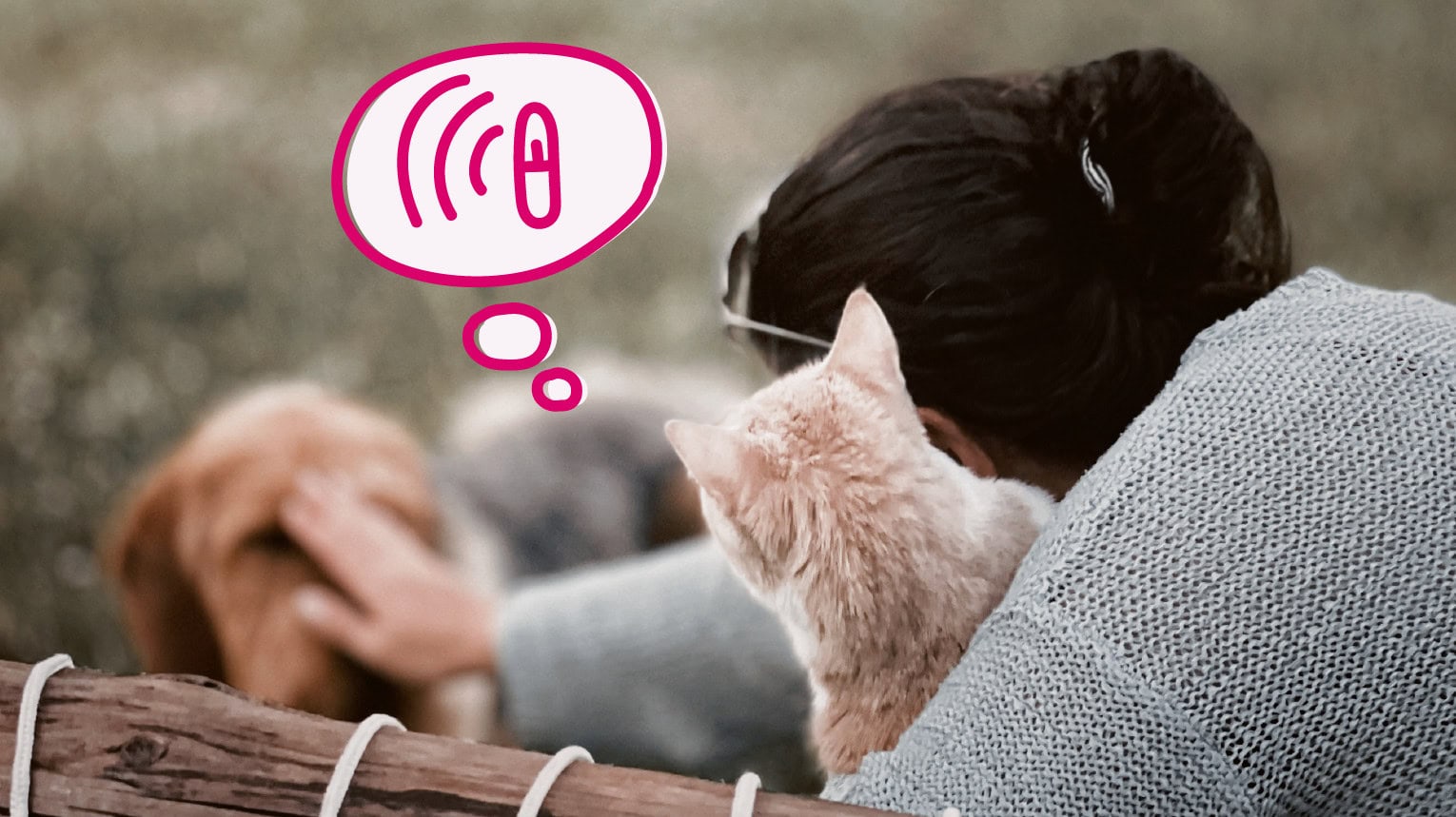Losing a pet is one of the scariest things for any pet parent. Thankfully, pet microchips can significantly increase the chances of a happy reunion. These tiny rice-sized implants, placed between the shoulder blades, provide permanent identification for your furry friend.
In this guide, I’ll outline the steps to reunite with your microchipped pet, sharing tips and advice to help you during this stressful time.
Why Microchip Your Pet?
- Increased Chance of Reuniting With Your Lost Pet: Statistics show microchipped pets are significantly more likely to be returned home compared to those without one.
- Permanent Identification: Unlike collars and tags that can fall off, microchips offer a permanent and reliable form of identification.
- Peace of Mind: Knowing your pet has a microchip provides peace of mind and allows you to focus on finding them if they go missing.
How to Register a Microchipped Pet
Most microchip registries allow you to register a chip online. Some companies charge a one-time registration fee, others charge an annual fee, and some are free but may charge for extra optional services.
However, there are completely free options for registering your pet’s microchip, no matter the brand.
8 Steps to Reunite With Your Lost Microchipped Pet
In my practice as a mobile veterinarian with BetterVet, I recommend following these steps to increase your chances of reuniting with your microchipped pet should they become separated from you.
1. Report Missing Pet to Registry and Update Information
Ensure your contact information in the microchip registry is up-to-date. The unique number in the registry gives the finder the owner’s contact information or the company the microchip is registered at so the owner can be contacted for reunification.
2. Search Local Area and Favorite Spots
Look for your pet in familiar areas where they might wander. While having the microchip in place improves the chances of reuniting lost pets with their owners, actively searching while you wait is also recommended.
Sometimes, pets will go to their favorite hangout spots, so searching these areas can be helpful.
3. Place Familiar Items Outside
Leave familiar items like bedding or toys outside your house. Placing your pet’s belongings, such as their bed or toys, outside can create a scent trail.
Pets have an acute sense of smell and may detect familiar scents from a distance. This familiarity can comfort your pet, reduce anxiety, and encourage them to stay in one place.
Additionally, placing food, water, or treats near your pet’s belongings can attract them to the area.
4. Contact Local Shelters and Animal Hospitals
Inform local animal shelters and hospitals that your pet is lost. This spreads the word and ensures that if your pet is found, these organizations can contact you promptly.
5. Contact Lost Pet Groups
Utilize online platforms and groups dedicated to reuniting lost pets with their owners. These provide a valuable resource for pet parents searching for their lost pets and individuals who have found lost pets. These include:
-
The Center for Lost Pets, a free national site sponsored by the HSUS
-
Pet Amber Alert, which alerts businesses and registered users of lost animals in their area
-
PetFinder & local animal shelters or rescue organizations can also help
6. Share a Post Online
Spread the word on social media platforms like Facebook, Nextdoor, and Instagram, and Craigslist to inform your community about your lost pet.
Many of these platforms have dedicated sections for lost and found pets.
7. Make Lost Pet Posters
Create eye-catching posters with your pet’s picture, description, and contact information. Display them in high-traffic areas such as community bulletin boards, telephone poles, local businesses, and pet-related establishments.
8. Be Patient and Don’t Give Up!
Reuniting with a lost pet can take time. Stay hopeful and persistent in your search efforts. By remaining persistent and using online platforms, community resources, and local animal agencies, you can increase the chances of finding your pet.
Conclusion
Microchipping is an effective solution for reuniting lost pets with their families. By providing a permanent form of identification, microchips significantly increase the chances of a happy homecoming.
Contact BetterVet to schedule a convenient in-home pet microchipping service.
Frequently Asked Questions
Is there an app to track your pet’s microchip?
Yes. There are apps for microchips that store and access a pet’s microchip number and registration details. Unfortunately, these apps do not allow tracking of your lost pet.
Do pet microchips have a GPS?
Unfortunately, microchips do not include a GPS function. Microchips have a unique identification number that is associated with your pet’s information in a microchip registry database. This number is retrieved by Radio Frequency Identification (RFID).
How do I find out where my dog’s microchip is registered?
Use the AAHA’s online microchip lookup tool to search the databases of all major microchip registries.
Can a microchip be removed from a dog?
No. A microchip implantation is a permanent form of identification that cannot be removed.
Are there different microchip registries?
Yes. Different chip companies often maintain separate databases. The good news is that some chip companies will register pets with any brand of chip. Also, the AAHA’s online microchip lookup tool searches the databases of all major microchip registries, making it easier for anyone who finds your pet to identify the right registry and contact you.
Sources:
-
Lord, L. K., Wittum, T. E., Ferketich, A. K., Funk, J. A., & Rajala-Schultz, P. J. (2007). Search methods that people use to find owners of lost pets. Journal of the American Veterinary Medical Association, 230(12), 1835-1840. Retrieved May 15, 2024, from https://doi.org/10.2460/javma.230.12.1835





